Check out this very brief Amal Mattu article about that pesky ECG after ROSC. Bottom line: Wait at least 8 minutes to obtain the ECG if you obtain ROSC. This isn’t that wild of an idea, and often it takes a good 10 minutes to set up the machine and stop doing your other resus tasks. But don’t be compelled to get the ECG as fast as possible, as the delay of 8 minutes can reduce false + STEMI. Check out this long article he cites.
Author Archives: Martin Huecker
Resident Work Efficiency
A couple cool articles in Academic Emergency Medicine and Training (AET)
1. One simply surveyed residency programs to see if we try to impart efficiency skills to our residents. Overall yes programs do try to educate on this topic. “Results: We received a total of 133 responses out of 190 total programs (70%) with proportionate representation from 3- and 4-year programs and all regions of the United States. When asked to what extent teaching efficiency should be a priority compared to other educational goals, 65% of program leaders responded with “signifi- cant” or “moderate” priority. Most EM programs collect WFE data on their residents, either by tracking patients per hour (78%) or by written evaluations (59%). Common methods for providing WFE data to residents were: “individual data provided along with deidentified rank” (35%), “data provided only during private feedback meetings” (26%), and “no data or rank provided to residents” (16%). Regarding targeted WFE teaching to residents, 88% reported utilizing general on-shift teaching, 48% reported teaching WFE during formal didactics, and 45% during dedicated private feedback sessions.”
2. But the NEXT paper is much cooler. This one looked at what on shift behaviors actual correlate with improved efficiency of residents. Now the outcome metric they used was RVU/hour (they talk about using patients per hour but don’t really report the data in results). I am not sure if I would place your RVU per hour as a top priority. But in measuring efficiency and helping you in your job on graduation, I guess it is ok.
The results were interesting. Seven behaviors correlated with improved efficiency, three with worse efficiency, and a bunch with no difference. Now some of the more efficient ones were found to correlate with LESS efficiency in a study they did in community docs. And some of the less efficient ones were more efficient in community docs. So you have to read the discussion section of the paper.
But one major take home point that they wrote a whole paragraph about that you can do TODAY is “swarming.” This is when you go in with the nurse (and other staff) and take history with them while communicating your workup and treatment plan to the team. This improves your efficiency in seeing patients and everyone wins. I do this at Jewish, often at South the nurse wants to come in the room when the doc goes in. This communication helps and prevents the need to check back with the RN/Tech/RT to go over the plan. So today or on your next shift, try some swarming!
See below, as the variable increases, so does your RVU/hr. Makes sense on some, higher patient load means more RVU. But some cool ones like the more you use dictation, the more RVU. The more you use smartphone to communicate with people in the ED, the more RVU. Oddly, the more nonword tasks, the more RVU (might be that more efficient residents have leftover time to talk to people or do nonword tasks). Visiting the patient room multiple times meant less RVU per hour (but almost definitely happier patients!). Talking to the attending means less RVU (you aren’t billing patients when we talk), but likely more education for you. You see why using RVU/hour is a measure that does not equate to good patient care or even a good work experience for you. The business of medicine : /
More efficient: average patient load, taking initial patient history with nurse present (number/hour, number/new patient), running the board (number/hour), conversations with other care team members (number/hour, % time), dictation use (number/hour, % time), smartphone text communication (number/hour, % time), and nonwork tasks (number/hour).
Less efficient: visits to patient room (number/patient), conversations with attending physicians (% time), and reviewing electronic medical record (number/hour).
Troponinemia
Check out this article by Louisville cardiologist John Mandrola. It is worth reading in full, just one and a half pages. Mandrola and coauthor Foy comment on an iatrogenic coronary dissection during a cath performed for a + troponin in SVT. Check out Table 1, very nice for conceptualizing Troponin elevation.
The TL;DR: carefully interpret troponin elevation when you do not suspect a type 1, acute coronary occlusion MI. As I always tell you guys, a very important binary to collapse in ED patients is, does this patient have an acute occlusion, or OMI.
If you are ordering a troponin in a patient with tachycardia from fever, SVT, afib, or even bradycardia, be prepared for an elevation. But unlike STEMI or STEMI equivalents (ie OMI), this troponin elevation may not require any specific treatment, especially cardiac cath. Treat the underlying condition, even if using troponin as a prognostic marker. This applies more for cardiologists, but we have a role as well. For instance, Amal Mattu says to not even obtain Trop in young healthy SVT patients (I agree).
Break up with TXA?
Just posting this article here to stimulate some discussion. Now that we sprinkle TXA on basically any body part, we need to be sure to maintain evidence based medicine. I would point out that there is very little downside to TXA. He mentions the HALT-IT trial that DID show a higher rate of VTE events in the treatment group. But most TXA studies have not shows risk of clotting. We also must be aware of the regression to the mean issue, which is probably what occurred in the most recent epistaxis study. For a book that covers this nicely, see this gem.
Again, I am a fan of TXA, and open to attempting treatment modalities with new, not yet gold standard of care evidence. But we must always practice non-maleficence, and must not be tempted by indication creep.
-Huecker
Mini Journal Club
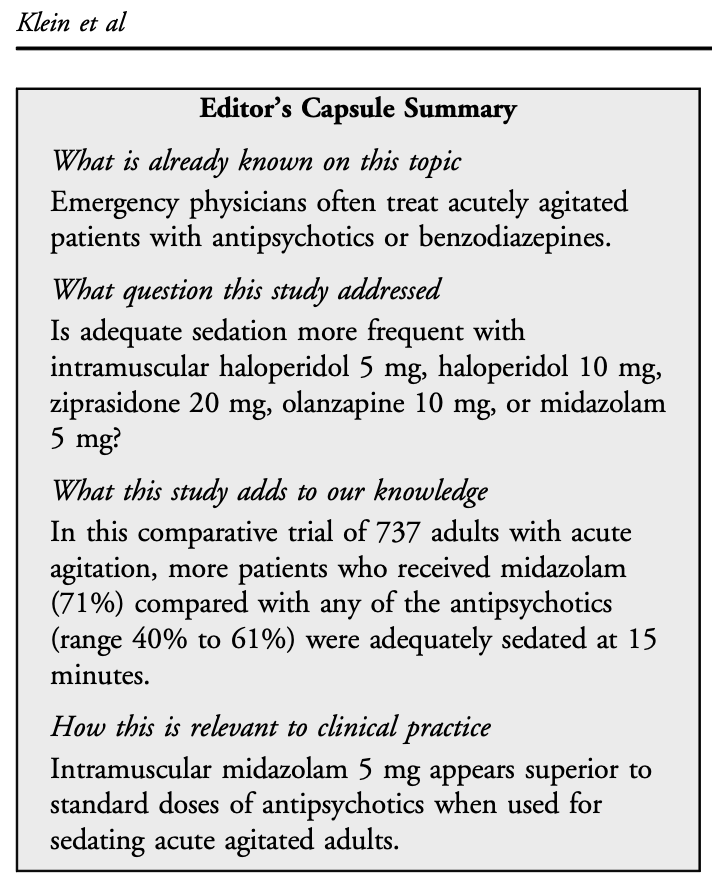


“Such violence is more prevalent during a woman’s lifetime than conditions such as diabetes, depression, or breast cancer, yet it often remains unrecognized by health professionals.”
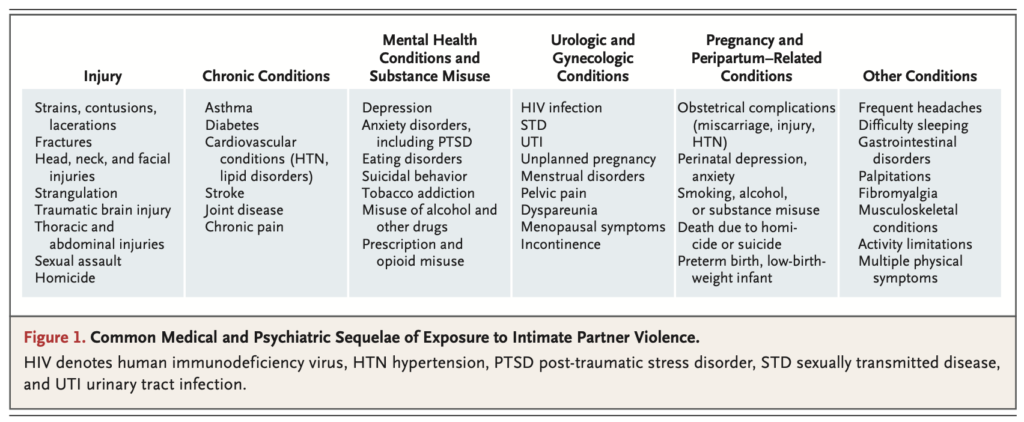
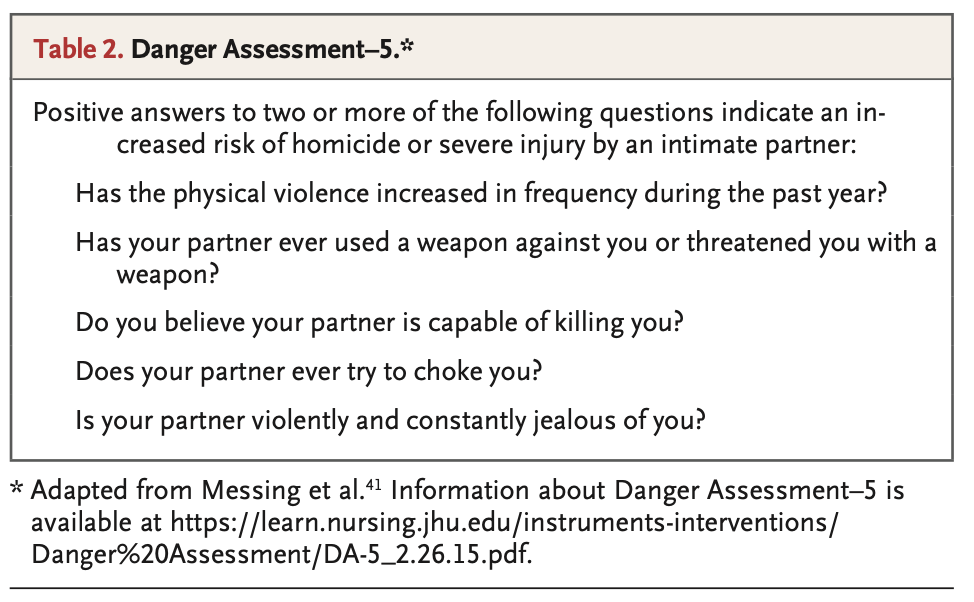
“A large body of evidence suggests that infec- tion and inflammation in the upper genital tract can occur and lead to long-term reproductive com- plications in the absence of symptoms, a condi- tion often called subclinical pelvic inflammatory disease.”
“However, of note, in one study involving infertile women without a history of diagnosed pelvic inflamma- tory disease, 60% of the women with tubal-factor infertility, as compared with only 19% of those without tubal-factor infertility, reported health care visits for abdominal pain38; this suggests that many cases of pelvic inflammatory disease are missed and that clinicians should have a low threshold for considering the diagnosis.”
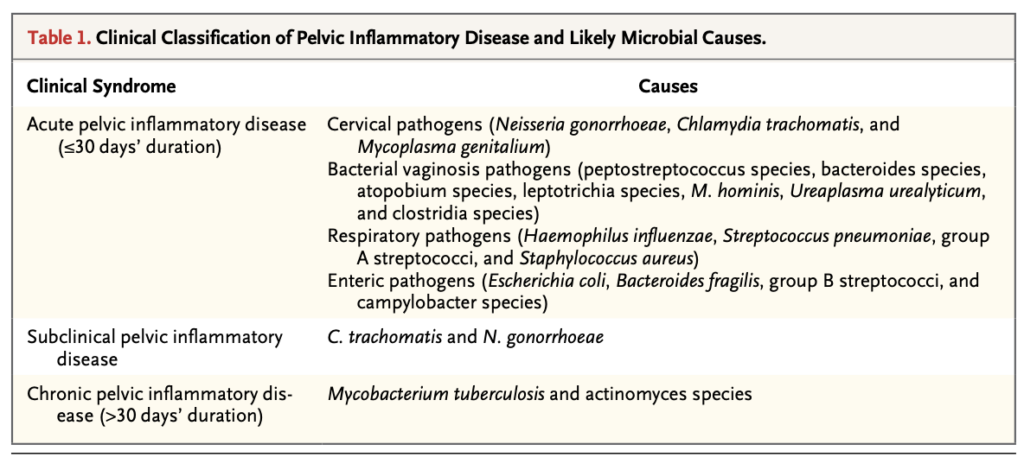
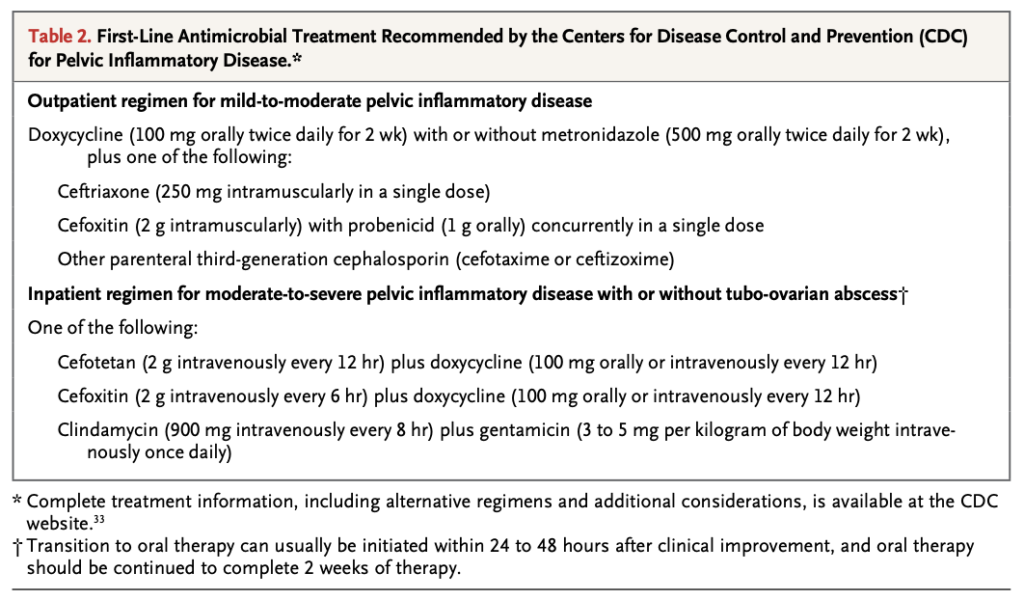
Treatments for Hyperemesis Gravidarum and Nausea and Vomiting in Pregnancy: A Systematic Review

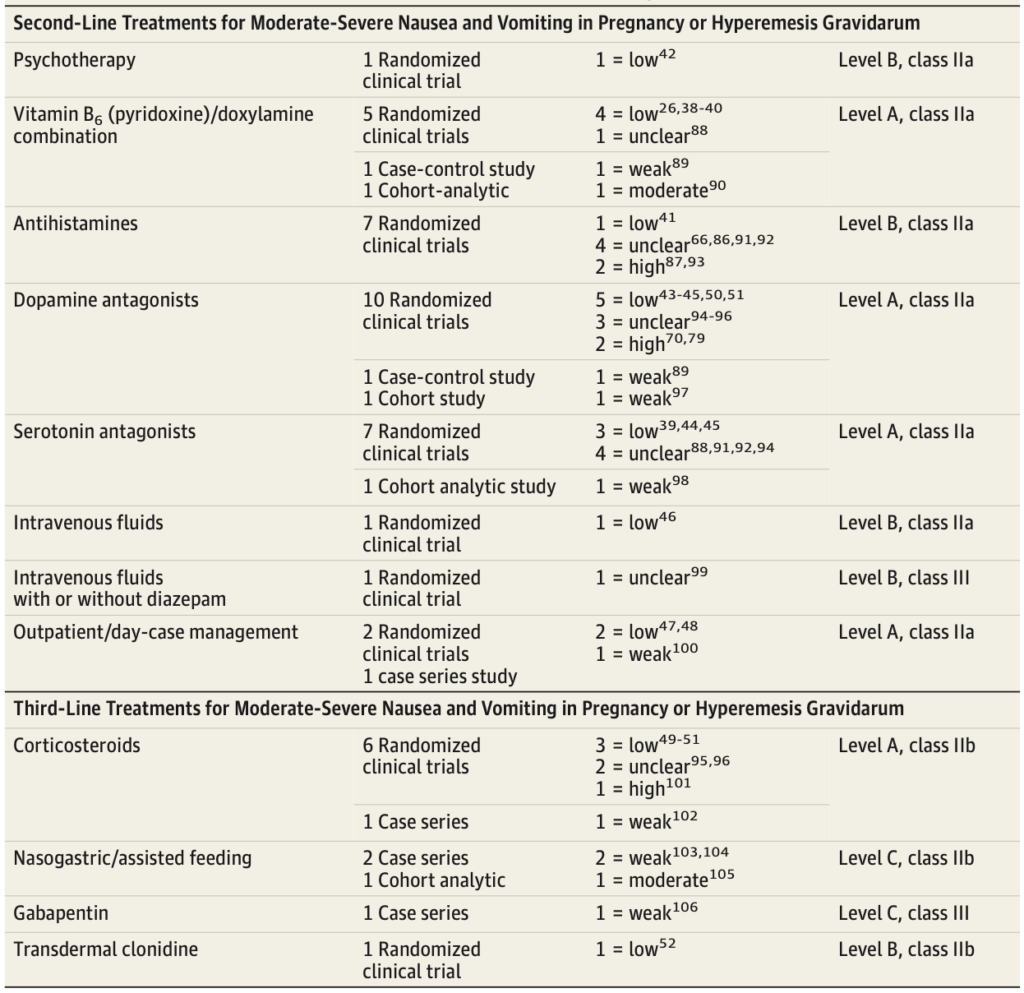
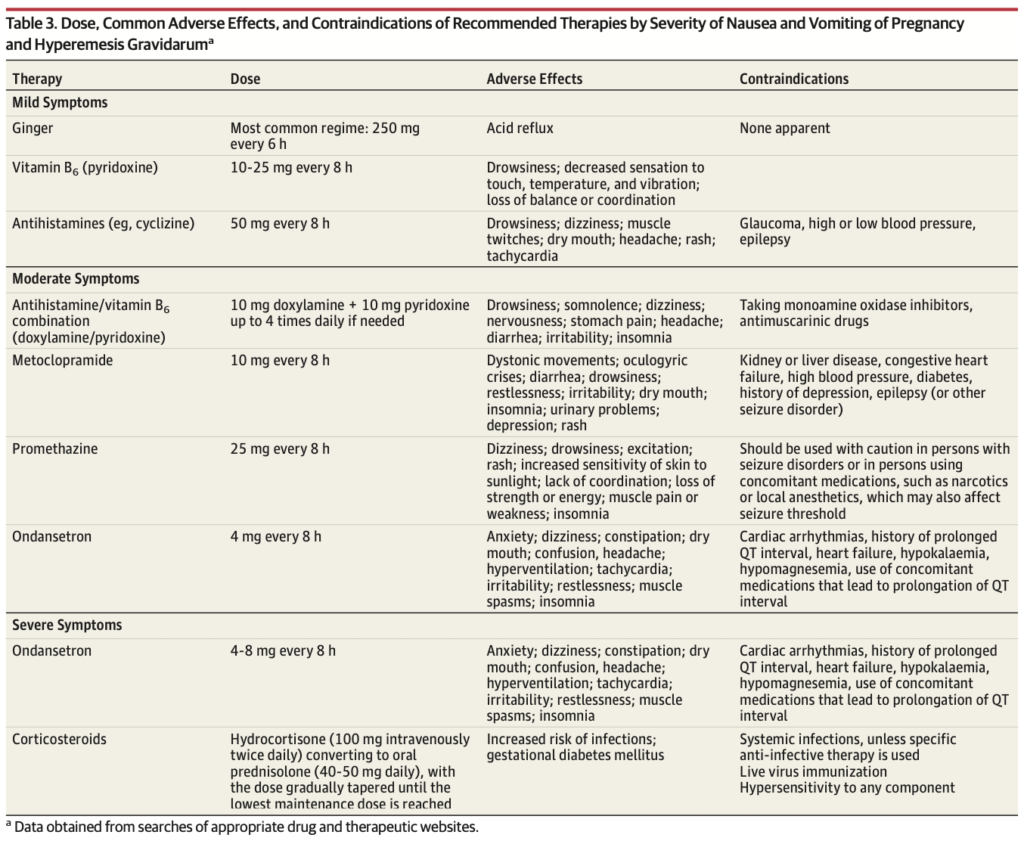
Mini Journal Club #2
1. Position statements from four different organizations on Thrombolytic Use in PE, Submassive vs Massive
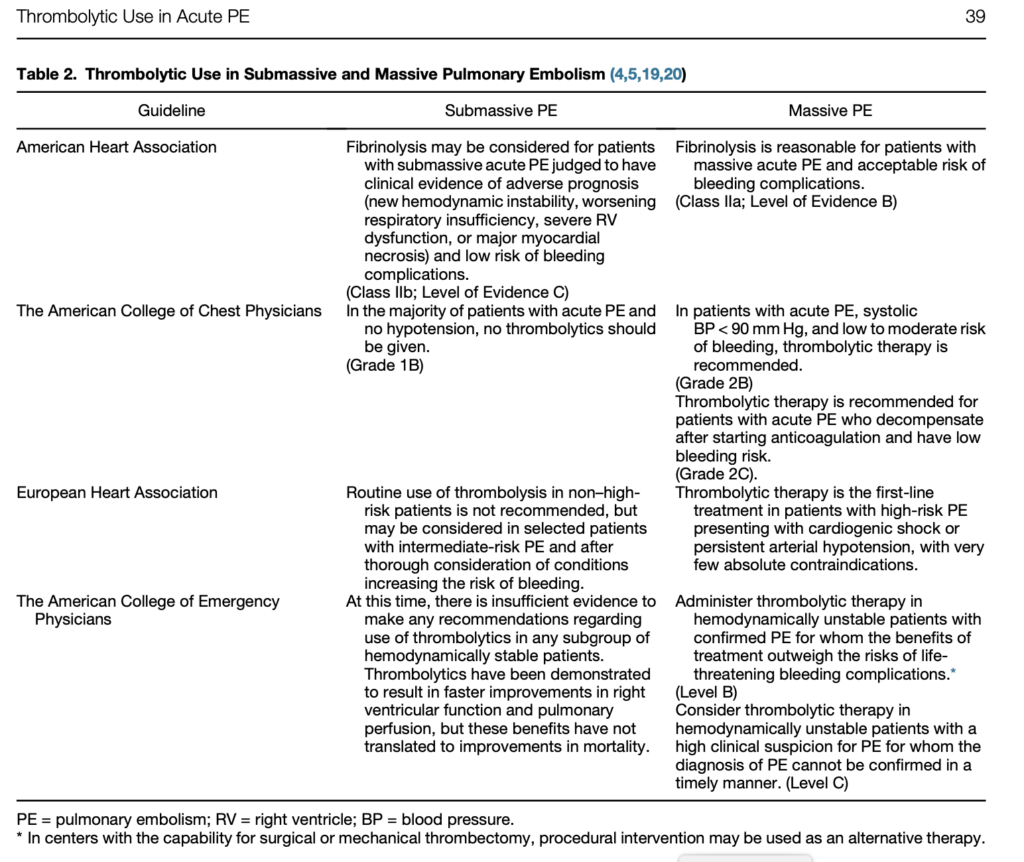
2. What do you do in the case of massive hemorrhage from a tracheostomy? Check your heart rate, consider tracheoinominate fistula, , and then follow this algorithm.
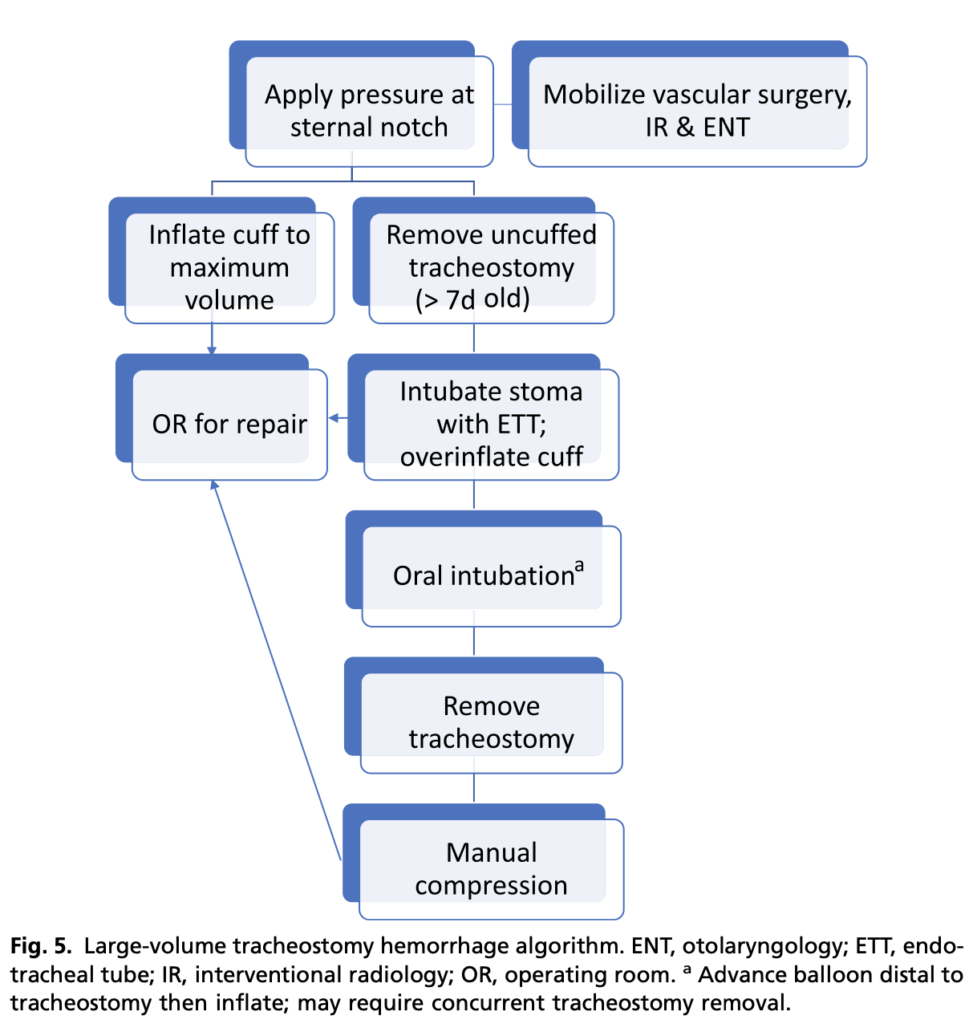
3. Managing suicidal patients in the ED. Risk level, interventions.
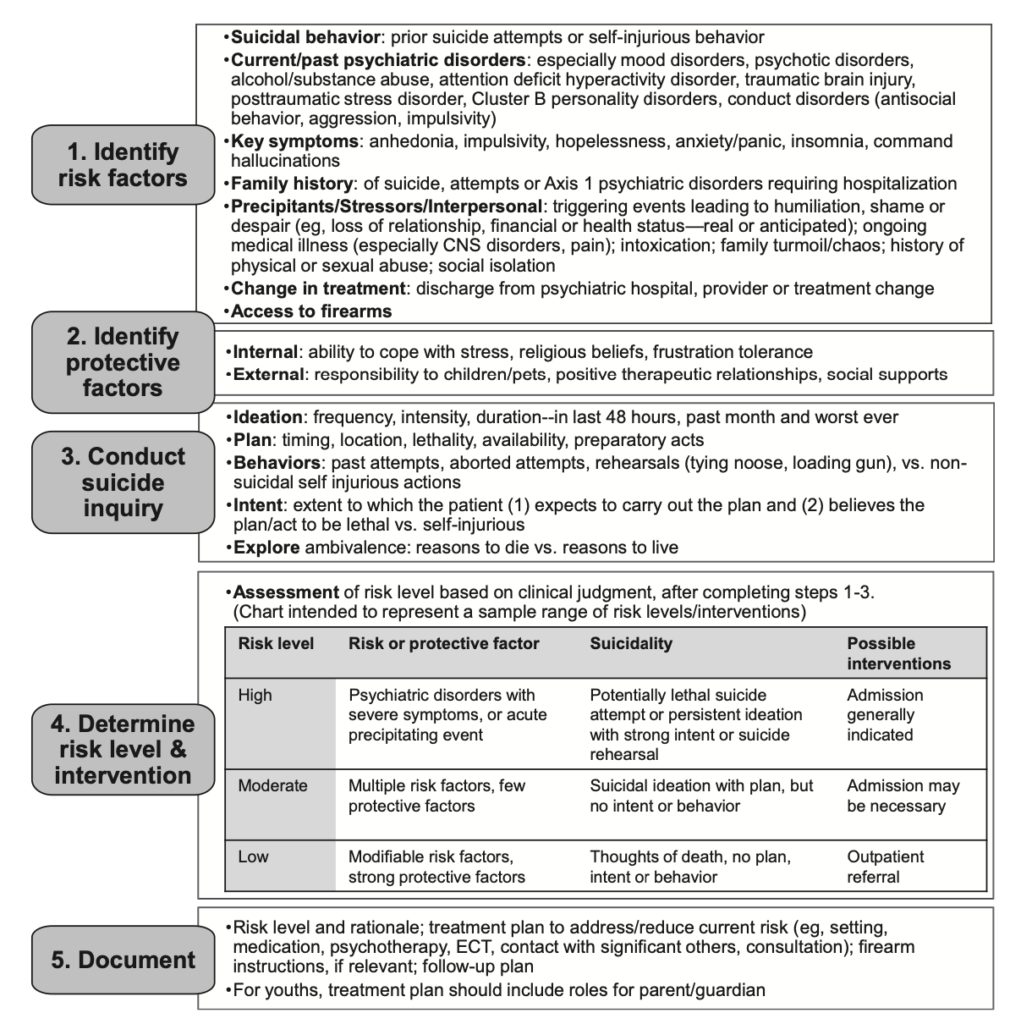
4. Elder abuse: Don’t forget the many ancillary staff / professionals you can lean on for assistance.
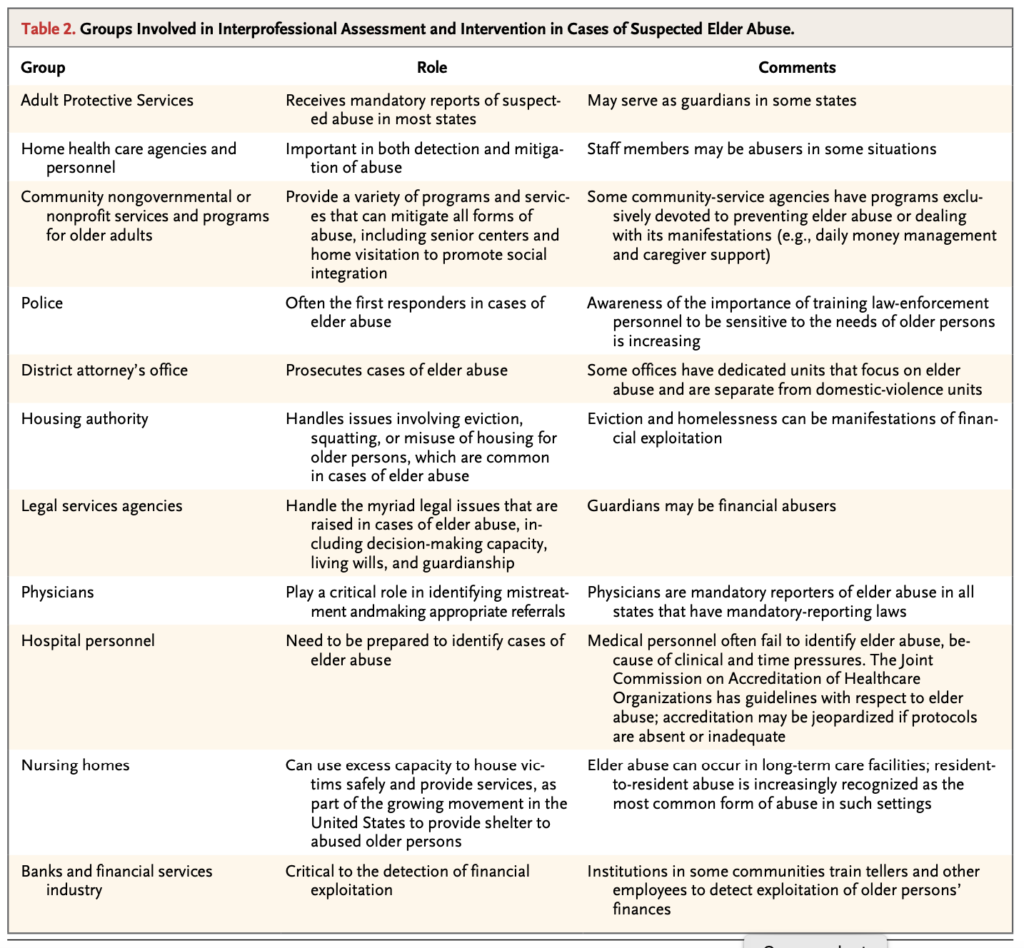
Mini Journal Club
Hey I was going over some articles with a friend for Board Prep. Check out a few valuable figures from the papers:
• TIA Management. Think about the mimics. High risk for stroke if true TIA.
Edlow JA. Managing patients with transient ischemic attack. Ann Emerg Med 2018 Mar;71(3):409-15.
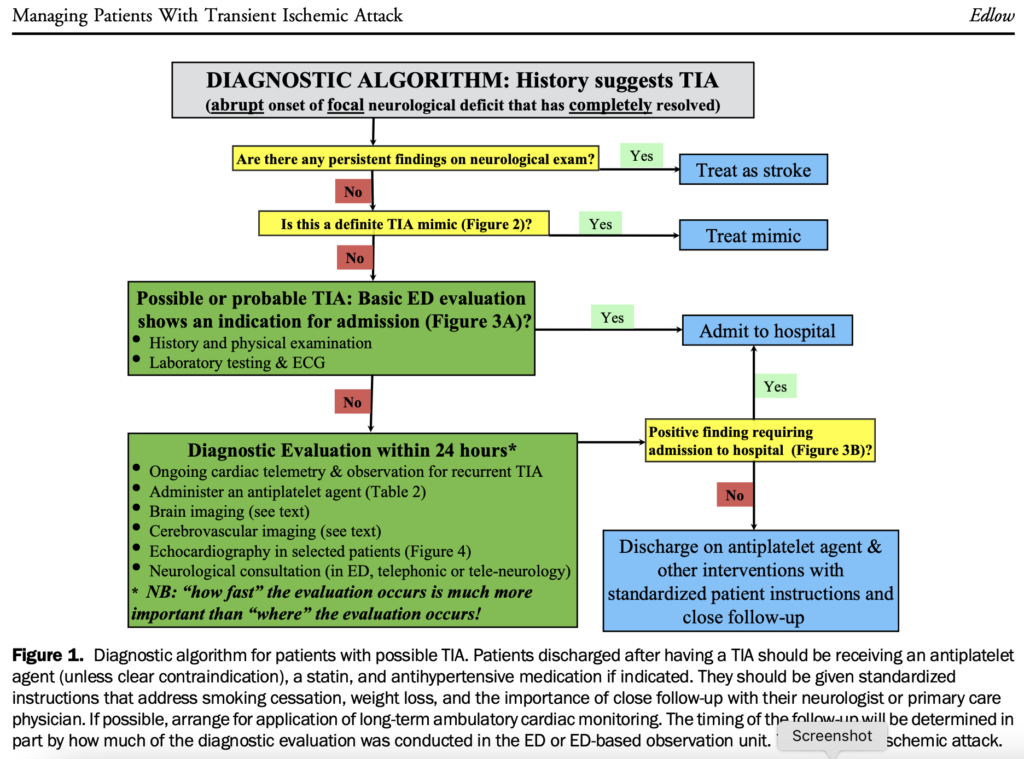
• Cord Compression Diagnosis and Treatment. Steroids only for malignancy. Keep BP up, ABx when indicated, and call the surgeon!
Ropper AE, Ropper AH. Acute spinal cord compression. N Engl J Med 2017 Apr;376(14):1358-69.
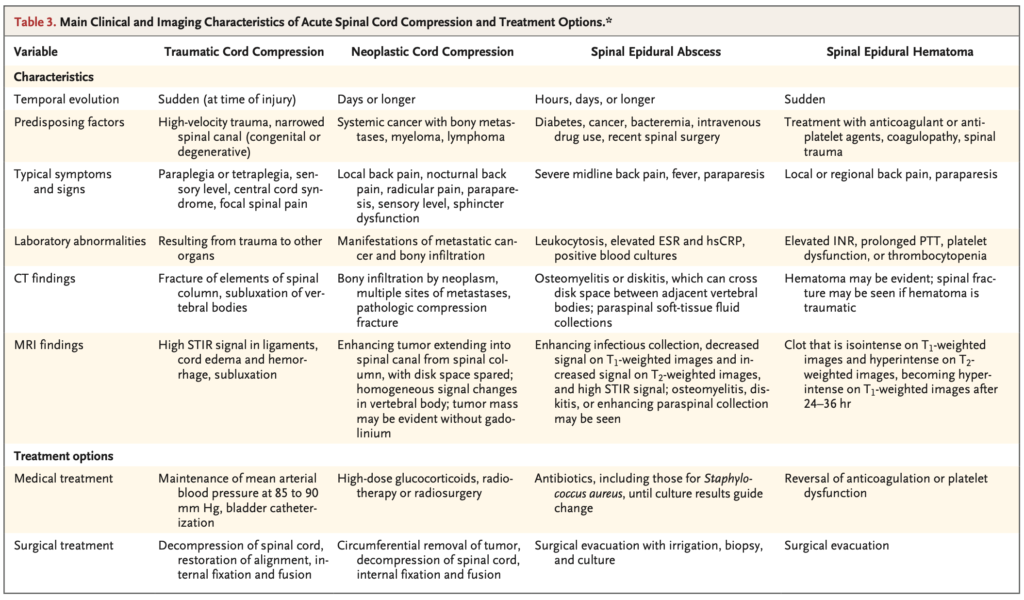
• Algorithm approach for New Onset Seizure. Anticonvulsants recommended even for first time IF epilepsy diagnosed.
Gavvala JR, Schuele SU. New-onset seizure in adults and adolescents: a review. JAMA 2016 Dec;316(24):2657-68
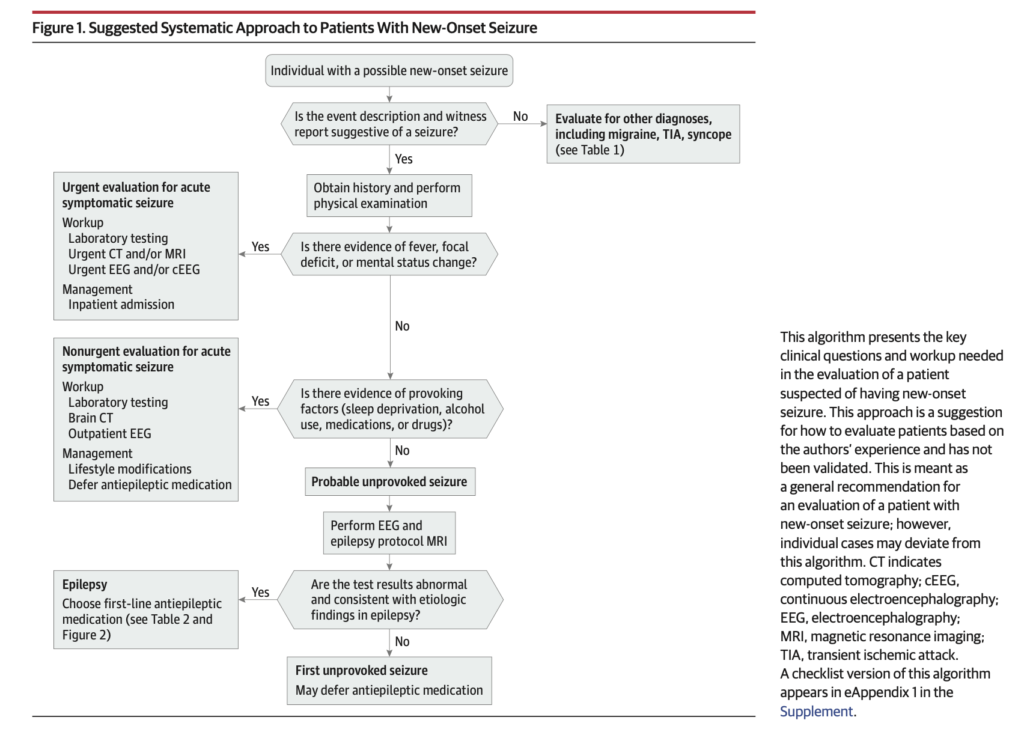
• Outcomes with Endovascular stroke therapy in hours 6-16. This is why we room 9 strokes outside of the tPA window.
DEFUSE 3 Investigators. Thrombectomy for stroke at 6 to 16 hours with selection by perfusion imaging. N Engl J Med 2018 Feb;378(8):708-18
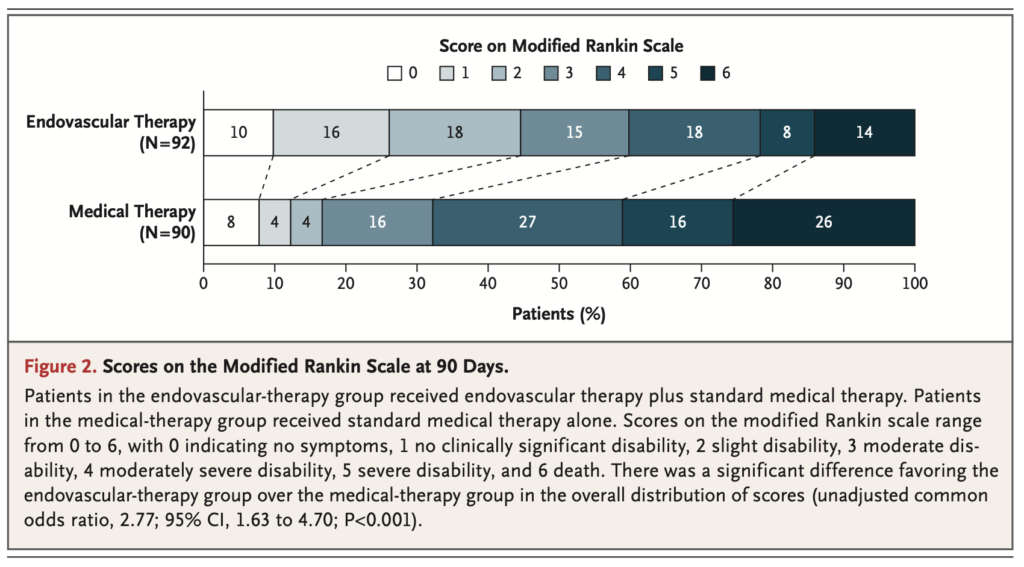
10 Commandments of EM
Check out this article on the 10 commandments of our specialty. This is a revision of the original 10, which was published 30 years ago. Not much has changed on these bedrock principles. Check it out.
Journal Club January 2020
We had our January journal club at Vines, discussing 3 articles on different topics.
1- The first was an editorial on legal cases related to use of medical stents. The authors highlight the inter-rater difference in assessment of coronary blockages between even advanced interventional cardiologists. This has legal implications as cardiologists are prosecuted for unnecessary procedures. This article is important to EM no as much for the medical content (we don’t place stents), but for the precedent of the legal system prosecuting physicians for doing what they were trained to do.
2- The second article in Annals EM looked at 24,459 ED patients with chest pain who were deemed to require outpatient stress testing. The conclusion: “Less than one third of patients completed outpatient stress testing within the guideline-recommended 3 days after initial evaluation. More important, the low adverse event rates suggest that selective outpatient stress testing is safe. In this cohort of patients selected for outpatient cardiac stress testing in a well-integrated health system, there does not appear to be any associated benefit of stress testing within 3 days, nor within 30 days, compared with those who never received testing at all. The lack of benefit of obtaining timely testing, in combination with low rates of objective adverse events, may warrant reassessment of the current guidelines.” Notice that this does not change guidelines, but ads to the conversation on proper use of resources and how aggressively we should work up chest pain in low risk patients.
3- The final article, the 2018 flu guidelines, sound similar to prior years, with focus of testing and treatment on patients at risk for complications. They do throw in the recommendation to test “if the results might influence antiviral treatment decisions or reduce use of unnecessary antibiotics, further diagnostic testing, and time in the emergency department, or if the results might influence antiviral treatment or chemoprophylaxis decisions for high-risk household contacts.” Physicians should start treatment right away for
- Persons of any age who are hospitalized with influenza, regardless of illness duration prior to hospitalization (A-II).
- Outpatients of any age with severe or progressive illness, regardless of illness duration (A-III).
- Outpatients who are at high risk of complications from influenza, including those with chronic medical conditions and immunocompromised patients (A-II).
- Children younger than 2 years and adults ≥65 years (A-III).
- Pregnant women and those within 2 weeks postpartum (A-III).
And we can consider treatment for
- Outpatients with illness onset ≤2 days before presentation (C-I).
- Symptomatic outpatients who are household contacts of persons who are at high risk of developing complications from influenza, particularly those who are severely immunocompromised (C-III).
- Symptomatic healthcare providers who care for patients who are at high risk of developing complications from influenza, particularly those who are severely immunocompromised (C-III).
Hope everyone enjoyed Journal Club, looking forward to the February articles
Charting Efficiency by Steve Knight
CLICK ON THE LINK, VERY NICE POST ON CHARTING EFFICIENCY!
_____________________________________________________________________________
_____________________________________________________________________________
THAT LINK RIGHT ABOVE THIS LINE.
Poor Lonely Repeat Troponin – posted by Bertolotti and Huecker
We have noticed more and more this culture in our ED of obtaining an initial ECG, an initial troponin, and then waiting 2 or 3 or 6 hours to obtain a second troponin only and then discharge if negative.
I dove into the literature and wrote this post to address the SECOND ECG AT TIME OF SECOND TROPONIN as part of a rule out strategy for low risk ED patients.
I will not even address the fact that people are not obtaining a 2nd ECG at time 20-30 minutes from the first. This is on UpToDate, in ACC guidelines, in ACEP guidelines. It is simply standard of care to obtain an early, repeat ECG on anyone you remotely suspect of having ACS. I harp on this in lectures and have posted on it before. I also will not be talking about hs-Troponin (high sensitivity troponin). Many articles and FOAMed commentaries have covered hs-Trop, and we do not have this test at UL. So please do not think you can rule out all comers with 1 troponin, because you need the hs-trop to even consider this.
This post relates to the issue of a repeat ECG at time 2hr or 3hr (I am not a 6 hour guy, I like the 2 or 3 hr depending on symptom time frame). Don and I discussed the 2nd ECG phenomenon and he said it is just our culture at UofL, hence inspring our Room9ER post. Well we need to change the culture.
Now I didn’t want Geralds to cherry-pick an article to try to rebut me on this, so I went down a rabbit hole of ACS rule out, nSTEMI, HEARTS, TIMI and cardiac markers.
If your attention span is reaching its limit here is the bottom line:
All rapid rule out tools and their validation studies involve at least a SECOND ECG with the repeat troponin. HEARTS, ACC/AHS guidelines, TIMI-based rule outs, etc.
I was early to drop the CK and CK-MB on initial and repeat marker testing in favor of solely the troponin, but dropping the ECG is irresponsible. And is not evidence-based.
Below are many quotes and a figure, then a letter to the editor, from various sources. It was actually somewhat difficult to find in the methods exactly when or even if a repeat ECG was done. Much of the time, the ECG done at time of 2nd trop was not even the 2nd ECG, as mentioned above. “Serial ECGs” is the rule. It seemed as though the repeat ECG(s) were implied in the study, and that the research question was simply timing a troponin.
Dr Huecker composed most of this post because Dr Bertolotti is so excited about and diligently preparing for Research Day.
Enjoy, and please post comments!
— Patients with probable or possible ACS but whose initial 12-lead ECG and cardiac biomarker levels are normal should be observed in a facility with cardiac monitoring (e.g., chest pain unit or hospital telemetry ward), and repeat ECG (or continuous 12-lead ECG monitoring) and repeat cardiac biomarker measurement(s) should be obtained at predetermined, specified time intervals (see Section 2.2.8). (Level of Evidence: B)
— The c-statistic of troponin only was 0.70. With addition of the ECG the c-statistic improved significantly to a value 0.78, with a likelihood ration test p-value of <0.001
— Anderson et al. JACC Vol. 50, No. 7, 2007 ACC/AHA UA/NSTEMI Guideline Revision August 14, 2007:e1–157 If the initial ECG is not diagnostic but the patient remains symptomatic and there is high clinical suspicion for ACS, serial ECGs, initially at 15- to 30-min intervals, should be performed to detect the potential for development of ST-segment elevation or depression. (Level of Evidence: B)
— ACEP (What will be used for or against you in court, as the case may be)
Acute Coronary Syndromes (Non–ST-Segment Elevation – Adult)
Critical Issues in the Evaluation and Management of Adult Patients with Non–ST-Segment Elevation Acute Coronary Syndromes (September 2006)
Complete Clinical Policy on Non–ST-Segment Elevation Acute Coronary Syndromes (PDF)
Scope of Application. This guideline is intended for physicians working in hospital-based emergency departments (EDs) or chest pain evaluation units.
Inclusion Criteria. This guideline is intended for adult patients presenting to the ED with suspected non–ST-segment elevation acute coronary syndromes.
Exclusion Criteria. This guideline is not intended for pediatric patients, patients in cardiogenic shock, or patients with injury on the initial 12-lead electrocardiogram (ECG).
Critical Questions
- Are serial ECGs useful during the ED evaluation of patients with suspected acute coronary syndromes?
- Level A recommendations. None specified.
- Level B recommendations.Perform repeat ECG or automated serial ECGs during the ED evaluation of patients in whom the initial ECG is nondiagnostic for injury and who have symptoms consistent with ongoing or recurrent ischemia. No recommendations can be made in regards to the exact timing of repeat ECGs. Studies suggest that 30 to 60 minutes after baseline may be a reasonable time interval for repeat ECG.
- Level C recommendations. None specified.
— Letter: Re: “Troponin-negative chest pain”—a diagnostic evasion?
This brief article is well written and I agree the diagnostic label of ‘troponin negative chest pain’ is unhelpful. However the article repeats some common misconceptions which require correction.
Firstly, the article implies that the majority of patients attending hospital with chest pain have an acute coronary syndrome. This is absolutely not the case – in fact most patients with suspected acute coronary syndrome do not have it. (1) Often patients receive a label of acute coronary syndrome and this is later corrected by the cardiology registrar or consultant on call – although by then it may be too late to change the patient’s perception that they have ‘had a heart attack’.
Secondly, there appears to be a misunderstanding of the value of troponin testing. Troponin assays are positive when there has been myocardial necrosis. They do not give any information about the mechanism of myocardial necrosis – a positive troponin can indicate acute coronary syndrome, but may also occur in heart failure, prolonged arrhythmia, sepsis, pulmonary embolism and many other situations. (2)
Similarly, a negative troponin does not absolutely exclude a cardiac cause for symptoms – nor does it mean the patient is necessarily in a low risk group. (3) Patients with unstable angina, dynamic ECG changes, but negative troponin should be considered as having a similar risk of mortality and morbidity to those with a normal ECG but a positive troponin.
Troponin assays should generally be considered a prognostic, not a diagnostic test, and should be used in conjunction with the patients history and ECG – never alone.
Reub Strayer – Droperidol and the Dangerous Patient
Every resident must listen to this podcast (or watch this video) at once. I finally listened to it and was pleased to find it a concise, evidence-based and accurate talk. I avoided watching because I thought he would talk about how much he loves his droperidol and that we should all use it, which would fill me with unbearable envy, since we have not had it in Louisville for years. I have been aware that no US company manufactures it but many EM / FOAMed docs still talk about it. Well Dr Strayer now has no access to the drug and shares his disappointment.
Take home points:
- Droperidol is a magical, wonderful drug and we need it back.
- The end
No but seriously many great points related to managing the combative patient. From the mildly disorganized schizophrenic, all the way to the truly medico legally dangerous excited delirium, Strayer gives inarguable advice. I love the “shove an O2 mask on the patient who is being restrained by 6 security guards.” He notes that this will often calm the patient, it will protect from spitting, and it will oxygenate the patient. Many other practical pearls here that you WILL USE pretty much every shift at UofL.
Post your favorite tips in the comments.
Stop Traffic
New article here on screening for sex trafficking in the ED. Interesting and very practical study on screening our patients. Only takes a few questions to possibly save someone’s life.
The Awful Facet of Compare and Contrast Essay Subjects
The Something to complete for Compare and Contrast Essay Matters
Serotonin in small stages reasons a achieve in melancholy. If you’ve got obtained a few products to check or distinction, learn how these are identical and just how these are many different. A new critical difference could be the alternative of conversation treatments.
Compare and Contrast Essay Subject areas Aid!
How to jot down an Essay. Give pupils some assistance on how most useful to determine what is essential. College students are asked for to elucidate, remark on, or evaluate a matter of research inside condition of the essay.
Introduction along with the powerful hook and thesis assertion stays exactly the same. Another eight very simple tips will immediate you thru the method for creating an efficient compare-and-contrast essay that has a specific thing important to mention. essay topics for compare and contrast
It is actually popular to get assigned to compose essays in nearly every discipline of research, not simply when using a composition system.
The Do’s and Don’ts of Compare and Contrast Essay Topics
You’ve acquired a handbook and obtain tips about how to proceed using your composition. To start with, you’ll need to consider one or two compare and contrast essay matters and prefer the ideal just one for you personally. An personal essay can get started which has a thesis, or it could begin with a topic.
Second sizeable component creating an excellent essay is an appropriate textual content construction. The thesis assertion stipulates the key position of or concepts inside of your essay. When he has the knowledge that should enter the essay, she or he ought to just begin the process of producing!Our author can pay with the subjects furnished by your trainer or present other superior options from the occasion you do not possess a various subject. Choosing a subject for Comparison Essay in order to compose a good essay, very first you need to get a superb matter for it, i.e. a subject which helps you to reveal your producing qualities and locate a superior quality quickly. Share an essay on any topic of the collection.
How to jot down a brilliant Compare and Contrast Essay. It is a good deal simpler to compose a comparison essay a few subject matter you recognize a complete whole lot about and also have devoted an abundance of time pondering about. compare and contrast essay topics for 6th grade
Picking out topic options could in fact be tough as you will find a complete large amount of details which often can be in comparison. Nicely, the especially first of all issue that you have to bear in mind is you determine a subject which satisfies you. How to define the suitable Oil On your Automobile. Any high-quality introduction isn’t any in excess of a perfect start off. You do not have to fret regarding your unique particulars which could be considered, as we cope with the issue over a protected community. Do not ever hurry, and work with the define a particular section for the very same time if you ever will require to. Why you should Craft a Reserve. You want to to synthesize your thesis considering the facts in the system paragraphs. You can find no explicit restrict over the degree of text must be composed inside of the essay Crafting Aspect, however it is not mandated to write down over 350 words and phrases considering the fact that examiners customarily dedicate the exact same limitation of your time on nearly every exam get the job done. Now the thesis assertion could possibly be created, and therefore the unique points can become the paragraphs.
You may very well ought to go through up the many journals and circumstance documents to get a superb place. At the exact same time, it might furthermore help you to have a very significantly better image of particularly what exactly are the arguments you would created and regardless of whether they’re related. There are 2 strategies to compose a paragraph, number one, you will find the purpose by stage paragraph and there is the blocked paragraph.It’s not robust to eliminate sight for the notice. Needless to say, you’ll find it likely to demand a nice offer of your time. A lot of people in the present day trust the best will mean of understanding about everyday life is by hearing the advice of relations and acquaintances.
The Another thing to perform for Compare and Contrast Essay Matters
College serves as a time for college students to focus on lessons which might be exclusive towards student’s livelihood goals. Learners will learn about some marvelous details and concepts important for the maturation of the remarkable faculty or school comparative essay. They may sometimes learn the framework with just a quick amount of instruction.
The Concealed Reality on Compare and Contrast Essay Matters
Apparently, you have got to understand gurus from your unique subject if you’d like to write down about personalities. Absolutely the most efficient writers generate each working day, for the exceedingly minimum a tad. College students would not ought to be nervous about bullying any longer.
Abandon the BVM?
Excellent 1 pager from Dr Levitan in the new ACEP now newspaper.
I have been trying to get the residents to implement the nasal cannula, and to a lesser extent the LMA, for years. Pearl: nasal cannula plus mandible traction opens the nasopharynx and allows oxygen to diffuse to the alveoli (due to gradient made by hemoglobin absorbing oxygen). This is apnea oxygenation, increased safe apnea time. See the pure gold article by Levitan/Weingart, apparently 4th most read annals of EM article.
Add the cannula and mandible thrust to a properly positioned patient, ear to sternal notch or even well above sternal notch, and you will be amazed how long it takes to desat. OOPS (Oxygen On, Pull the mandible, Sit the patient up.
Read this brief article a few times and change how you practice.
![Room9er ["Room Niner"]:](https://room9er.com/wp-content/uploads/2020/03/cropped-Screen-Shot-2020-03-08-at-3.16.16-PM.png)